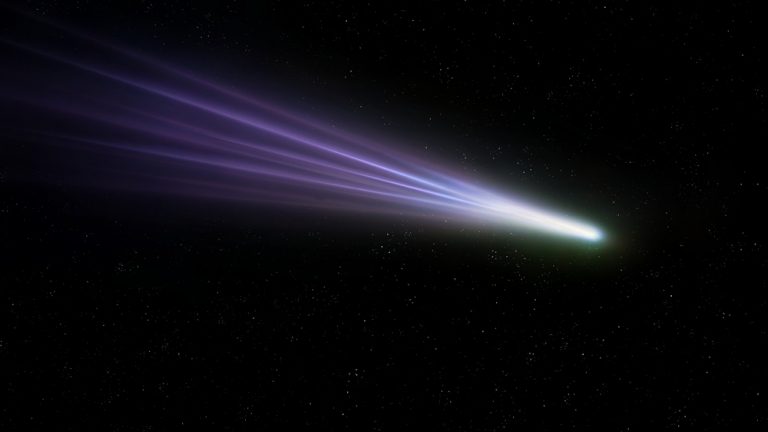A rare cosmic event is set to take place this weekend as Comet C/2023 A3, also known as Tsuchinshan-ATLAS, will be visible from Earth for the first time in 80,000 years. This ancient celestial traveler hasn’t graced our skies since the time when mammoths roamed the Earth. The comet will be at its brightest over the next four consecutive mornings, from Friday to Monday, just before dawn. Those who are willing to rise early will have the chance to witness it with the naked eye, though using a telescope or binoculars will provide an even better view.
Currently, the comet is speeding towards the sun at a staggering 150,000 miles per hour. It will reach its closest point to the sun, known as perihelion, on Friday, making it an ideal time for stargazers to catch a glimpse of this rare spectacle. For those in the Northern Hemisphere, the best viewing opportunity will be about 30-40 minutes before sunrise, looking slightly above the east-southeast horizon.

The comet, which was discovered early last year, will reappear between October 10 and October 30, but this time it will be visible in the western sky just after sunset. This long-period comet has an orbital cycle of around 80,000 years, making its appearance a once-in-a-lifetime event. NASA astronaut Matthew Dominick even captured a stunning time-lapse video of it from the International Space Station, highlighting its approach.
For those curious about what to expect, amateur astronomer Stuart Atkinson described it as resembling a “fuzzy star with a misty tail.” Comets like Tsuchinshan-ATLAS, often called “dirty snowballs,” are made up of ice, dust, and rock. As they approach the sun, they release gas and dust, creating the iconic tails that we see stretching across the sky.
Looking ahead, there’s more to anticipate for space enthusiasts. Another comet, 333P/LINEAR, will be visible at the end of November, though it won’t be as spectacular as this weekend’s event. So, mark your calendars and set those early alarms to catch a glimpse of Tsuchinshan-ATLAS, a truly rare visitor that won’t return for another 80,000 years.




